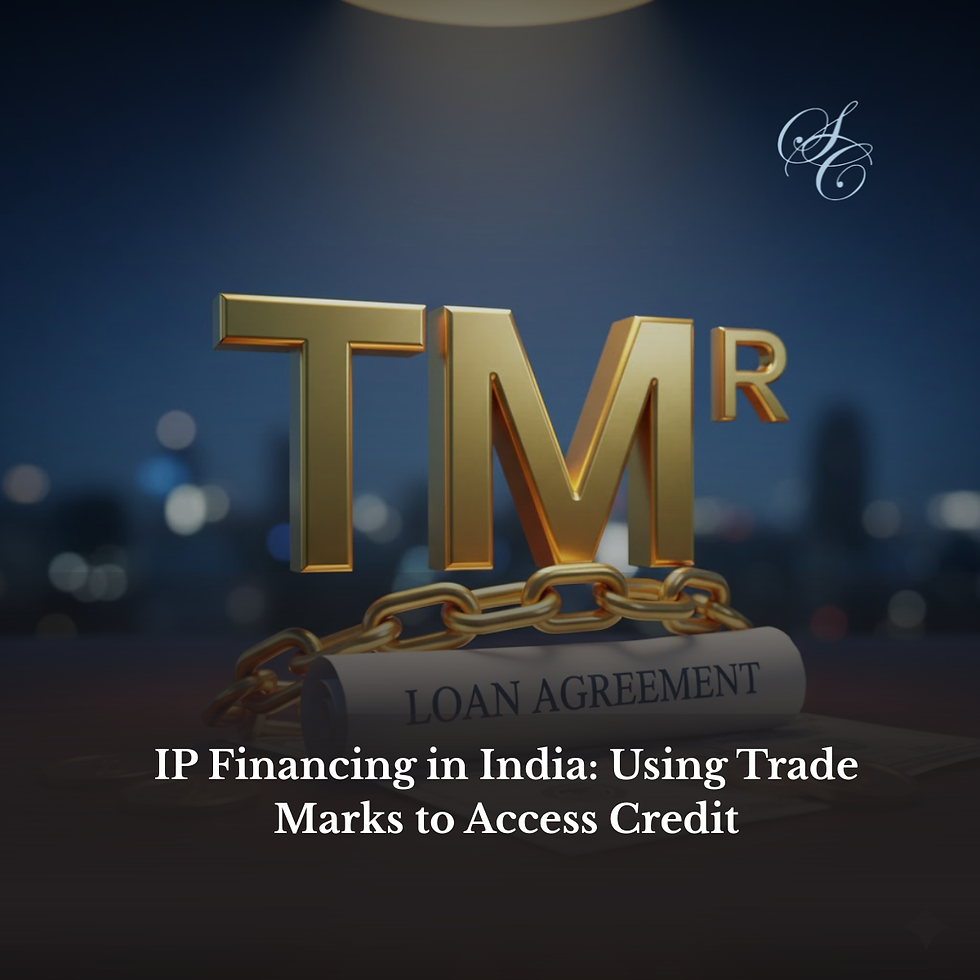How Real Is Virtual Fashion? – An IP Perspective
- Sarwajeet Singh
- Jan 31, 2022
- 4 min read
The term “metaverse” has become widely popular. While the term may seem new to some, it has actually been around since the early 90’s, when it was coined by sci-fi writer, Neal Stephenson, to describe a 3D virtual space where humans interact using avatars. Today, metaverse is used to describe a digital space that combines aspects of social media, online gaming, virtual reality, augmented reality and cryptocurrency.
The metaverse has opened endless possibilities for different industries, including the fashion industry. Various fashions brands, including luxury brands, such as Gucci, Louis Vuitton, Balenciaga, Dolce & Gabbana are developing unique strategies to engage an increasingly sizable pool of consumers that inhabit the metaverse. A few such strategies include, organizing virtual fashion shows, creating augmented reality experiences such as virtual try-ons that enable consumers to try on digital representations of physical garments, providing digital clothing for avatars in video games and uploading designs for real and digital clothing onto the blockchain (so these files can be sold as NFTs).
The entry of luxury brands in the virtual world has raised concerns regarding protection of Intellectual Property rights in the metaverse. Recognizing the growing need to protect their IPR in the metaverse, brands such as Ralph Lauren, DKNY and Nike have already filed trade mark applications in the United States and the European Union for goods/services relating to the metaverse, such as “featuring virtual clothing and accessories for use in online virtual worlds” (Class 35), “online, non-downloadable virtual clothing and accessories for use in virtual environments” (Class 41), and “downloadable virtual goods, namely, computer programmes featuring footwear, clothing, accessories” (Class 9).
Owning a brand/trade mark, always carries with it the risk of trade mark infringement, even in the metaverse, and brands have become proactive in protecting their trade mark rights in the virtual world. Recently, Hermès took legal action against a digital artist, Mason Rothschild, whose Birkin bag-inspired NFT artwork, MetaBirkin, that previously sold for $23,500 in June 2021, launched a December follow-up collection. Hermès took a public stance that the NFTs “infringed upon the intellectual property and trademark rights of Hermès and are an example of fake Hermès products in the metaverse” and later on filed a trade mark infringement and dilution lawsuit against Rothschild in the US. It will be interesting to see how the lawsuit plays out eventually as Rothschild had, previously, on receiving a legal notice from Hermès, made a public statement that “I am not creating or selling fake Birkin bags. I’ve made art works that depict imaginary, fur-covered Birkin bags.” The artist had also claimed that the First Amendment provides protection to create art that is a commentary on culture, an argument known as “fair use”. However, because Rothschild did financially benefit from the sale of the MetaBirkin, and there is also a strong likelihood of average consumers associating the MetaBirkin with Hermès, the MetaBirkin could be perceived as more akin to counterfeits than cultural commentary. Additionally, Hermès can also get relief under the laws of trade mark dilution, by arguing that the unauthorized use of the MetaBirkin by Rothschild, is likely to impair the distinctiveness or tarnish the reputation of its “famous” Birkin marks.
Consequently, NFTs and digital fashion have become prudent for fashion brands to stay relevant, with various platforms letting creators design and sell digital fashion. Luxury fashion brands are getting in on the action by partnering with gaming publishers such as Roblox and Epic Games to launch their products in the metaverse. But with some designs created by brands and others created by fans, comes the potential confusion among consumers as to whether they are buying items created by brands or by third-parties. The amount of confusion has to be seen from the point of view of an average consumer. Further, creators are not aware of IP rights of brands and end up infringing them one way or another, all in the name of artwork.
In such cases, at present, it is only fashion giants like Gucci and Louis Vuitton who are likely to succeed in winning court battles owing to their vast history and global exposure, unlike small brands who have a bigger battle to fight. Hence, it is only in the best interest of the fashion brands to step up and protect their IPR in the metaverse right now. Even though the law is yet to catch up, there are certain trade mark classes that cover virtual goods and virtual spaces. As regards protection of these digital fashion items is concerned, it is possible that the World Intellectual Property Organization may, in the coming editions of the NICE classification of goods and services, include goods/services relating to the metaverse.
As regards Indian fashion brands, the well-known fashion designer, Manish Malhotra, launched India’s first fashion NFT in October 2021, which sold out in seconds. The collection included sketches and GIFs of five couture pieces worn by models/actors such as Deepika Padukone, Alia Bhatt, and Lisa Ray. ‘Illuminous Showstopper’, a custom-made constellation sketch for Kareena Kapoor Khan, got the highest bid of approximately INR 2.8 lakhs.
Unlike global fashion brands that have already become a part of the race to get their trade marks registered in the metaverse by filing for applications covering virtual goods and virtual spaces, Indian fashion brands are yet to dive into this arena. In fact, given the number of piratical copies we encounter of famous celebrity outfits designed by renowned Indian designers, these designers will need to quickly move and protect their IPR in the virtual world before their rights are infringed by third-parties in the metaverse.
In fact, brands should look ahead and also consider licensing and assigning their trade marks to digital creators and artists in the metaverse in order to retain and commercialize their IPR in the metaverse as far as possible. After all, the metaverse is not about just a good or a service, it’s a digital experience that a brand can own and capitalize upon, and there is a lot of potential for the fashion world in the virtual world that is yet to be unlocked!




Gambling can often be an exciting form of entertainment, but it is important to understand that it carries risks. In order to maintain the thrill without facing negative consequences, you should always monitor your mood and avoid placing bets that could lead to significant losses. You can learn more about Is TheLotter safe if you are interested. Play consciously, set limits, and don't let your emotions get the better of you, so that gambling brings only positive emotions.